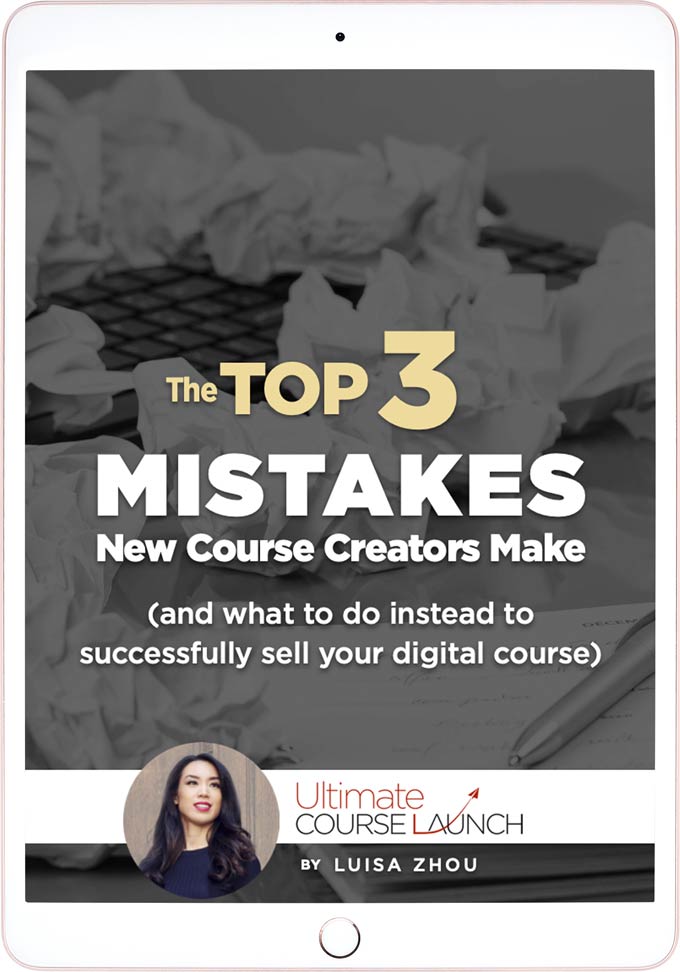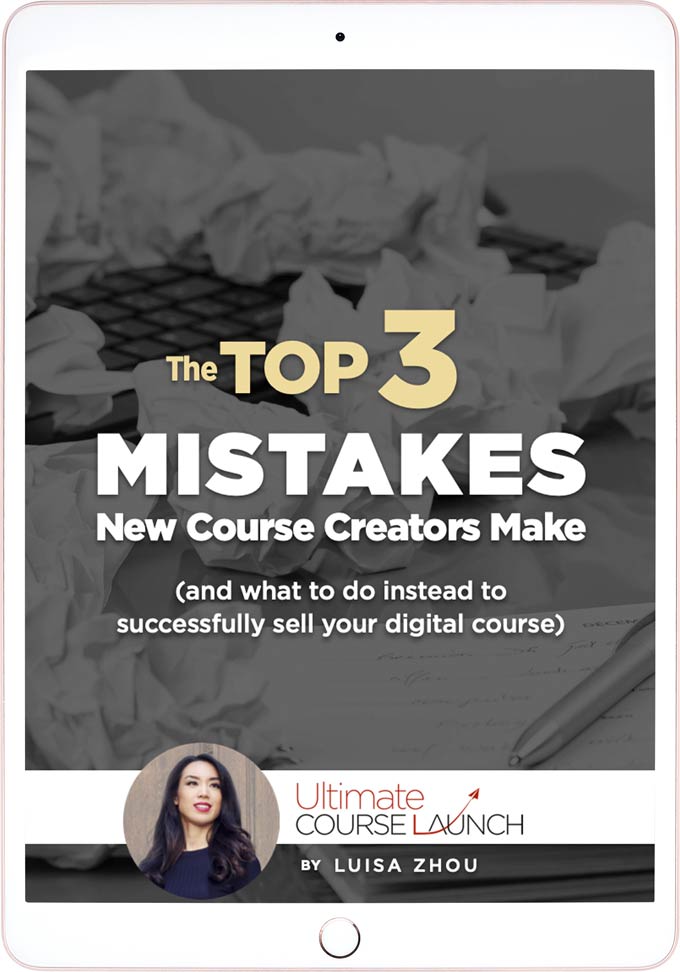Want to learn all about cohort-based courses?
You’re in the right place.
Because today, I’m going to walk you through cohort-based courses, show you how to build one, and give you a few examples to get you started.
Ready? Let’s go!
Discover the top 3 reasons most courses fail
(plus how to fix them so you succeed)
What are cohort-based courses?
Cohort-based courses have a shared learning experience. Simply put, students take a distance-learning course together in real time and participate in live discussions.
They are a bit like a traditional classroom setting. But since they typically take place online, they’re available to anyone, anywhere.
And if a student can’t attend a session, there are often playback options.
There’s not any one format that cohort-based courses have to stick to.
For example, I used to offer one called Employee to Entrepreneur Live. This course was based on my flagship course, ETE (a fully self-study course).
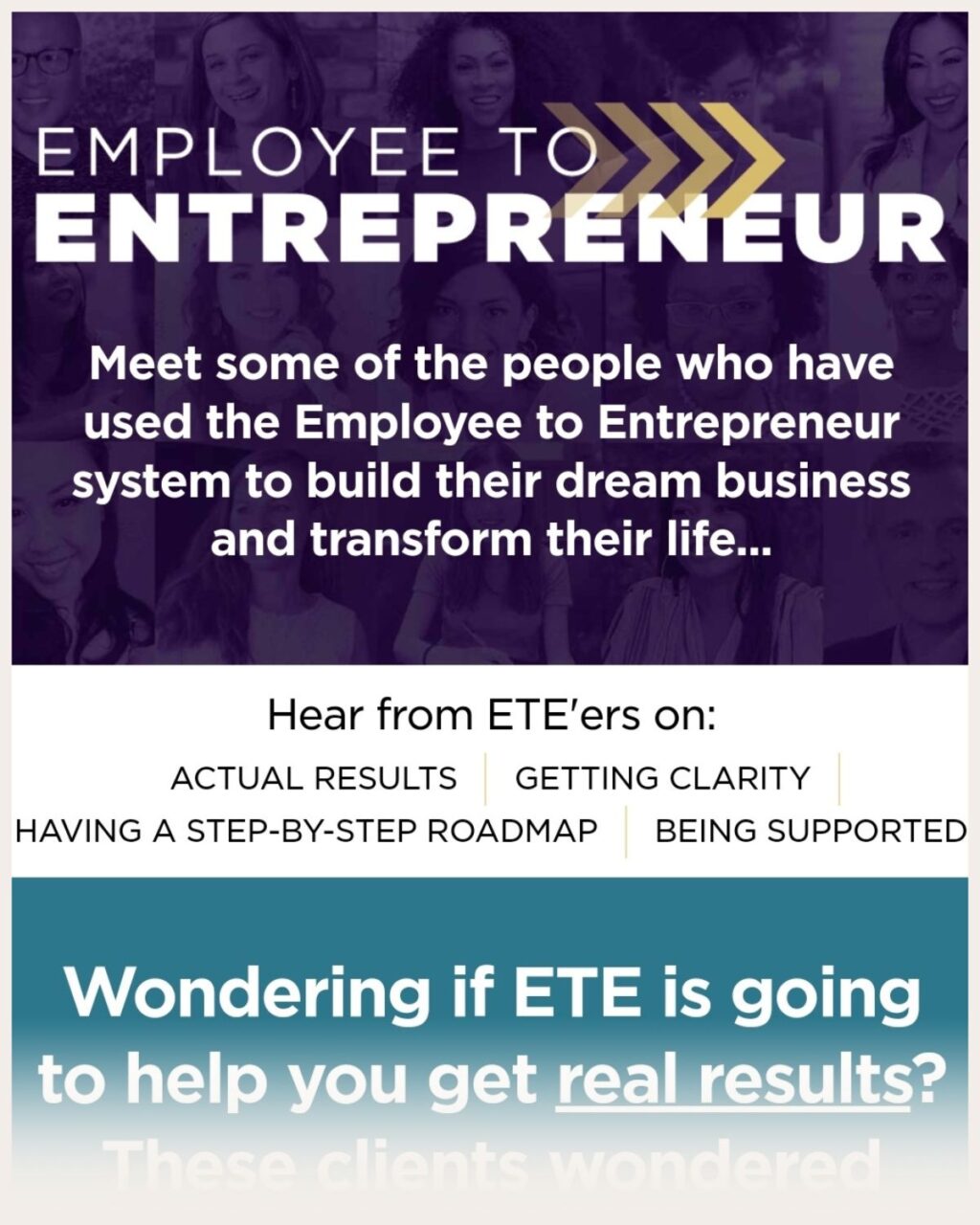
But instead of having students move through a syllabus together, the course was self-study with a group coaching element.
In addition to the course material itself, students received:
- Dozens of live group coaching calls
- Lessons from business experts
- Support and feedback in an exclusive ETE group
Basically, people went through the program to learn how to set up a business as fast as possible.
The best part about cohort-based courses?
You can teach as little or as many people as you want – I used to host hundreds in ETE Live.
At the same time, self-paced and cohort-based courses may sound like they offer the same kind of learning experience, but they are actually quite different.
I’ll break down the differences next, so keep reading!
What are the differences between self-paced and cohort-based courses?
Cohort-based courses aren’t the same thing as self-paced courses.
Let’s talk about some of the differences.
Learning style
Collaboration is key in cohort-based courses. There’s an emphasis on group interaction and progressing through the syllabus together.
In self-paced courses, students work through the course at their own speed and in their own style. If they want to spend more time on one topic or section, they can. Or they can skip it altogether.
Engagement
Engagement is much higher in cohort-based courses than in self-paced courses.
Why?
Because students take cohort-based courses alongside others.
This means they have the chance to interact during live sessions, offer accountability, and create a community.
On the other hand, self-paced courses don’t offer any real-time interaction, so it’s easy for students to check out instead of engaging with the material.
Schedule
Students on cohort-based courses follow a fixed schedule.
However, self-paced courses allow students to learn on their own schedule without having to worry about live sessions or deadlines.
While that flexibility is good for some, others might struggle to stay motivated and on track.
Which leads me to the next difference.
Completion rates
Because cohort-based courses are taught live and according to a schedule, they see a much higher completion rate than self-paced courses.
According to an MIT study, self-paced courses have a completion rate of just 5% to 10%.
However, 90% of students finish cohort-based courses.
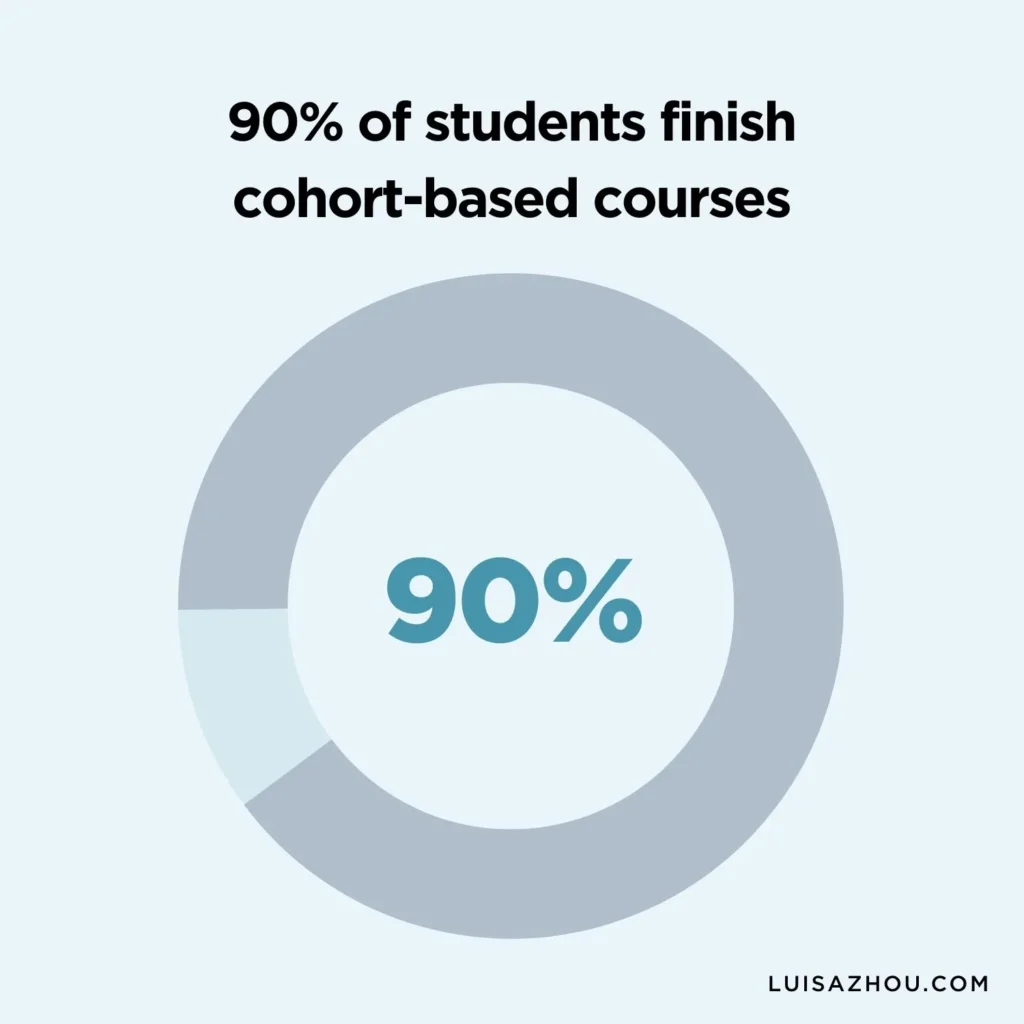
Why?
Because the benefits of cohort-based courses motivate students to stay engaged.
What are the benefits of cohort-based courses? That’s what we’ll look at next.
What are the benefits of cohort-based learning?
Here are some of the best benefits of cohort-based courses:
- Community support: In cohort-based courses, working alongside other students in live sessions, discussions, and group activities creates a sense of community. This helps students stay engaged, motivated, and accountable.
- Engagement: Because cohort-based courses require students to actively participate in them, students stay highly engaged. Most students (90%) say they feel engaged in cohort-based courses compared to just 60% of students taking self-paced programs. Higher engagement leads to better understanding and a greater sense of fulfillment.
Discover the top 3 reasons most courses fail
(plus how to fix them so you succeed)
- Increased motivation: In cohort-based courses, it’s not just instructors who motivate students. When the students interact with each other, they create a supportive learning environment that drives motivation. In fact, 85% of students say they feel motivated in cohort-based courses.
- Accountability: When you take part in cohort-based courses, you’re working alongside other students who count on you to contribute to discussions and activities. That kind of responsibility will keep you accountable throughout the course and make it harder to slack off or choose not to complete it.
- Knowledge retention: Studies have found that cohort-based courses are 41% better for retention. Why? Because students are actively engaging with the material and collaborating with their peers, all of which lead to a deeper understanding.
- Audience insights: Students aren’t the only ones who learn a thing or two in cohort-based courses. As the course creator, you can learn a lot from your audience and their feedback, including what works, what doesn’t, and what needs to be changed. This is especially helpful if you want to turn it into a self-study course.
If you’ve been thinking about creating your own cohort-based courses, keep reading.
I’ll show you how to do it in just a few steps.
How to create successful cohort-based courses in 7 steps
When it comes to creating successful cohort-based courses that sell, there are a few things you need to do.
And it all starts with choosing the right topic.
Pick a profitable topic
The key to finding a profitable topic is figuring out your niche.
Your niche is critical – it’s what will help you instantly stand out from the cohort-based courses already on the market.
I know choosing a profitable niche seems like a tall order, but it’s as simple as solving a problem that people are willing to pay for.
You only have to ask yourself two questions:
What skills do I have? And what do people want?
Start by writing down all your skills, whether you use them in your day job or a hobby – those are your potential topics.
Then, work out which of these is the most profitable.
To do that, you’ll have to carry out some market research.
Are there any courses already being offered on the topic? If not, it’s likely not a profitable idea.
Remember, the problem you’re solving doesn’t have to be new. You just have to solve it faster or cheaper than other courses.
It’s also worth checking where your audience hangs out. Think places like Reddit or Facebook groups.
There, you will see what your audience is talking about and uncover the problems that need solving.
Not sure where to start when it comes to your niche? I’ve put together a list of over 200 ideas in this guide.
Structure your course
Once you’ve landed on your topic, it’s time to start building the course.
But before you can think about the content, you have to consider the framework.
It’s best to create an instructional design storyboard to help you figure out what the course needs to cover for students to achieve their full potential.
What did their life look like before your course, and what will it look like after? What will they have to accomplish to get there?
Think of it like helping students get from point A to point B. The milestones your students have to reach will serve as your modules (which we’ll talk about next).
Once you’ve got the bones of your course, it’s time to think about a schedule and find the best name for your course.
You’ll also need to decide on the format.
Most cohort-based courses are delivered by video, but you can also use slides, reading materials, or other visuals like screenshots or PDFs.
Create an outline
With the overarching structure of the course in mind, it’s time to create an outline that includes all of the relevant information.
The modules and lessons in your outline should be driven by the course’s ultimate goal – the transformation that your students are working toward.
Think back to the storyboard you created. The milestones will act as your modules.
Discover the top 3 reasons most courses fail
(plus how to fix them so you succeed)
Those milestones will serve as the course sections, and the information within them will be the lessons.
Lessons, which have video, audio, and images, are small and easy to understand.
Just don’t include too much, or you’ll run the risk of overwhelming your students.
I recommend keeping your course on the smaller side – 4-8 modules with 3-7 lessons each.
Here’s an easy template to follow:
- Course name
- Course description, including the learning objectives and end goal
- Course schedule
- Modules
- Lessons
- Bonuses, if you’re including any
- Assessments, if you’re including any
You can learn more about creating a course outline in this guide.
Remember, your outline is just an overarching look at your course. It doesn’t have to be final!
In fact, it probably won’t be – it took me years of feedback and edits before any of my online courses were perfect.
Want to learn more about outlining your course? Check out this video:
Choose the right platform
You’ll also need a place to host your course.
For that, you have three options.
1. Host on your own website
You can host and sell your course on your own website if you have one.
WordPress offers several plugins, like AccessAlly, that make building and hosting a course easy. You’ll also have complete control of your content and pricing.
However, you’ll need some tech experience to host on your own website.
2. Use online course platforms
If you don’t have a website, online course platforms are the next best option for creating cohort-based courses.
Teaching platforms like Thinkific or Teachable are easy to use and designed to help you create a professional-looking course.
There are also cohort-based course platforms, like Eduflow.
3. Use online course marketplaces
You can also use online course marketplaces such as LinkedIn Learning, Maven, or Coursera, but there are some drawbacks to keep in mind.
While you might reach a larger audience, you won’t own that audience. You also won’t be able to control your pricing and will have to follow the marketplace’s rules around format, length, and style.
Create a price package & presell
Figuring out a price is one of the hardest parts of launching cohort-based courses.
Your price hinges on a few things:
- Results
- Target audience
- Your experience
- Course features
- The cost of creating the course
Your first cohort-based course can be priced anywhere from $197 to $497.
And after you’ve gotten a few students, you can raise your rates to $1,000 or higher.
My best advice? Don’t overthink it.
I talk more about pricing cohort-based courses here.
Here’s the thing about selling your course.
You don’t have to wait until it’s finished. In fact, you shouldn’t!
Pre-selling your course will help you validate the idea and make sure there’s a market for your topic.
All you have to do to pre-sell your course is:
- Create a course sales page
- Outline the course
- Create your first module
- Launch it
Discover the top 3 reasons most courses fail
(plus how to fix them so you succeed)
Launch your course
As you gear up to launch your course, don’t just focus on what it looks like or costs.
Instead, make sure you’re offering content that’s valuable, relatable, and stands out from other courses.
How?
By including interactive sessions, collaborative group activities, and plenty of opportunities for students to engage with and ask questions about the material.
When you’re ready to launch your course, choose a plan that works for where you are in your course creation journey.
You can do a no-list launch using paid ads, affiliates, or your own audience. Or, you can use all three.
Dial-in launches are great for creators with existing email lists.
Or, if you’ve already launched a course, you can scale up.
Get testimonials
A testimonial is a review of your course.
And they’re incredibly powerful for cohort-based courses.
Why?
Because they act as social proof – in other words, people are more likely to buy a product that other people have vouched for.
A good testimonial will answer two important questions:
Why did someone like your course? And what did it help them achieve?
In other words: “This course helped me _____, so I could _____.”
A big misconception about testimonials is that you can only get them from paying clients.
However, you can get them from anyone you’ve helped!
At the end of the day, it’s not about whether or not someone’s bought your course. It’s about the ways you’ve helped people.
You’ll find a complete guide to asking for testimonials (and scripts to use!) in this guide.
Now that we’ve talked about how to launch cohort-based courses, let’s take a look at a few successful ones.
Top cohort-based course examples
There are thousands of cohort-based courses out there that cover any topic you can think of.
I’ve seen courses on personal finance, weight loss, money-saving hacks at Disney, and more.
Here are a few examples.
ETE Live
Like I mentioned earlier, I used to offer a cohort-based course called Employee to Entrepreneur Live to hundreds of students at a time.
It was all about helping people launch a successful and scalable business that could replace their 9-5 jobs and offer them more freedom, flexibility, and fulfillment.
Technically, it wasn’t a fully cohort-based course.
Instead, it was a self-study course that also included group coaching, guest speakers, and access to an exclusive community.
And, if a student couldn’t attend a session for whatever reason, they always had access to video recordings.
Newbie Real Estate Investing
My student, Ryan, built a real estate portfolio that earns him more than six figures a year.
And with interest in real estate investing on the rise, he knew there was potential for a cohort-based course.
So, on top of his one-on-one coaching offer, he launched a group coaching mastermind.
In the mastermind, students help each other find different ways to solve real estate problems and offer multiple perspectives.

Coursera
Coursera is a course marketplace with thousands of courses from all kinds of creators.
And now, students can use it to earn certificates from universities worldwide, including universities like the University of Illinois and the University of Colorado.
While some are self-study, a good number are cohort-based courses that include live session classes and take up to 10 hours per week.

Here are some of the courses currently available:
- Digital Marketing Graduate Certificate from the Gies College of Business
- Innovation Management & Entrepreneurship University Certificate from HEC Paris
- Entrepreneurship and Strategic Innovation Graduate Certificate from the University of Illinois
- Digital Transformation from Thayer School of Engineering at Dartmouth College
- Business Essentials University Certificate from IE Business School
Next steps
There you have it!
Everything you need to know about cohort-based courses, including how to launch your own.
I’ve helped hundreds of students launch their own successful six- and seven-figure courses.
But I see the three same mistakes get made time and time again.
Want to find out what they are – and how to avoid them?
I’ll tell you in my FREE guide. Get it here:
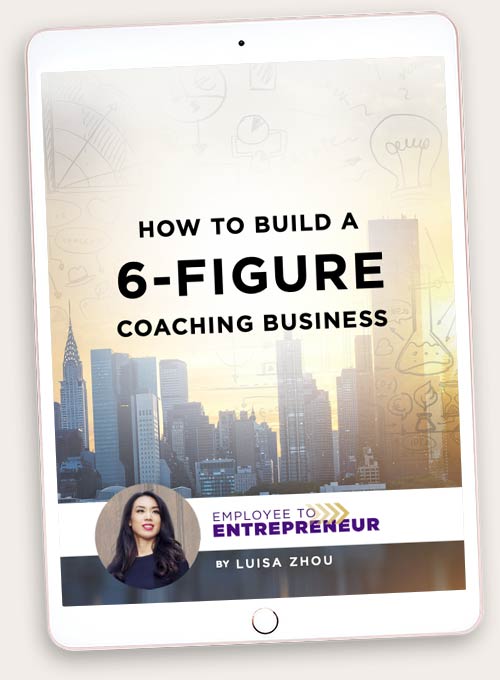
Want to Build a 6-Figure Coaching Business So You Can Achieve More Freedom?
When you sign up, you’ll also receive regular updates on building a successful online business.
Read more:
What is an Online Course? Definition, Examples & Benefits
How to Create an Evergreen Course to Sell Online
The Best Course Creation Software and Tools





